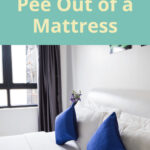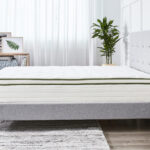Do you ever wonder what is inside a mattress that makes it so comfortable? It’s a question that many of us have asked ourselves at one point or another. After all, a good night’s sleep can depend on having the right mattress for our needs. In this article, we’ll uncover the secrets of a comfortable night’s sleep by exploring what is inside a mattress and how it affects our sleep.
Types of Mattresses
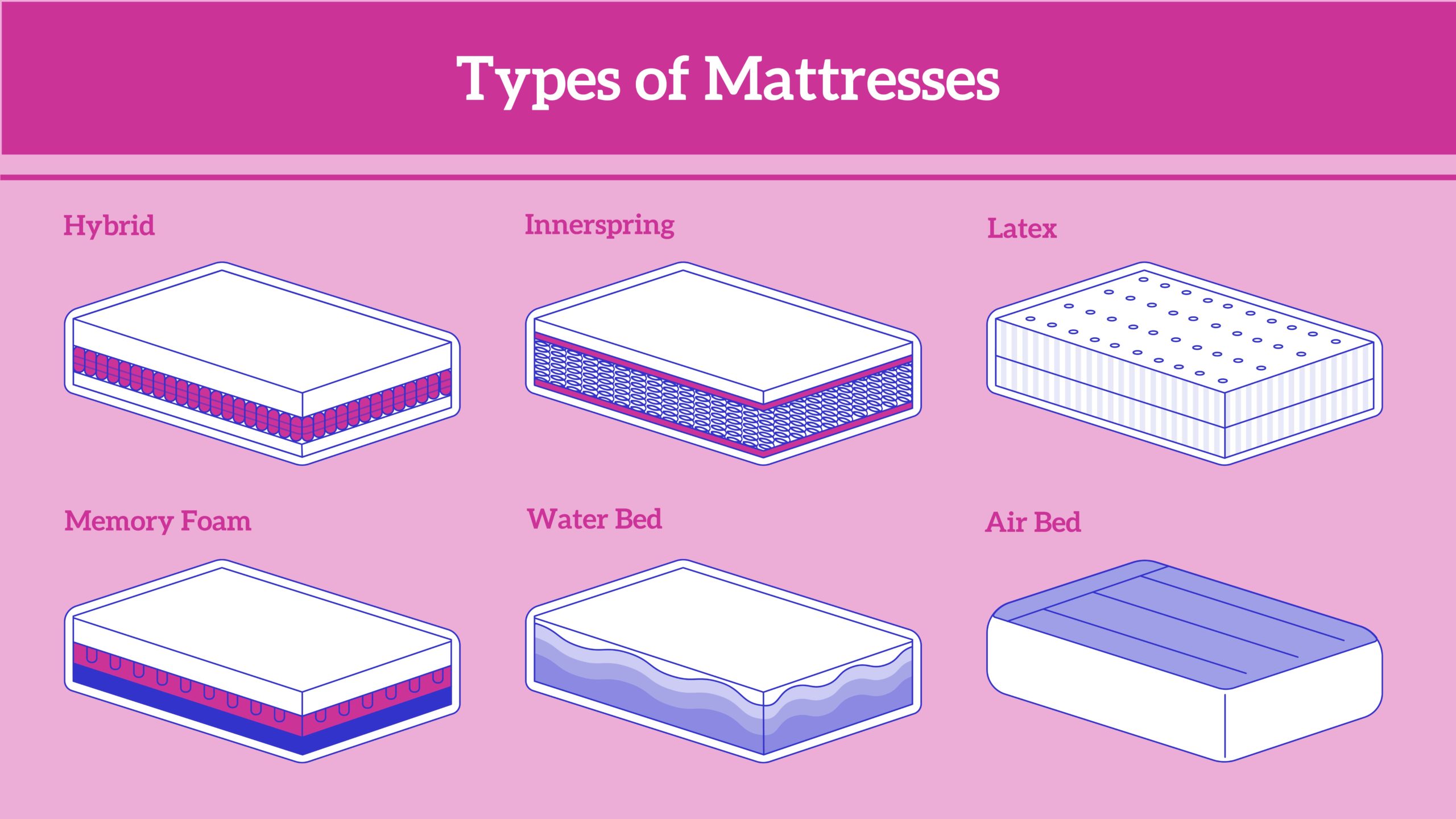
Innerspring Mattresses
Innerspring mattresses are the most common type of mattress and are made up of metal coils and foam padding. These coils are designed to provide support and comfort and can be customized to your body type and sleep preferences.
Memory Foam Mattresses
Memory foam mattresses are made of a foam material that is designed to mold to your body and provide additional support. These mattresses are often more expensive than innerspring mattresses, but can provide more comfort and pressure relief.
Latex Mattresses
Latex mattresses are made of natural materials, such as rubber tree sap, and can be a great choice for those looking for an eco-friendly mattress. Latex mattresses are known for their durability and breathability and can offer a comfortable sleeping experience.
Hybrid Mattresses
Hybrid mattresses combine the best of both worlds of innerspring and memory foam mattresses. They are made up of a combination of coils, foam, and other materials, and can provide a comfortable sleep experience.
No matter which type of mattress you choose, understanding what does the inside of a mattress look like can be essential to getting the most comfortable sleep possible. Understanding the different components that make up a mattress, and the benefits each offers, can help you find the perfect mattress for your needs.
Components of a Mattress
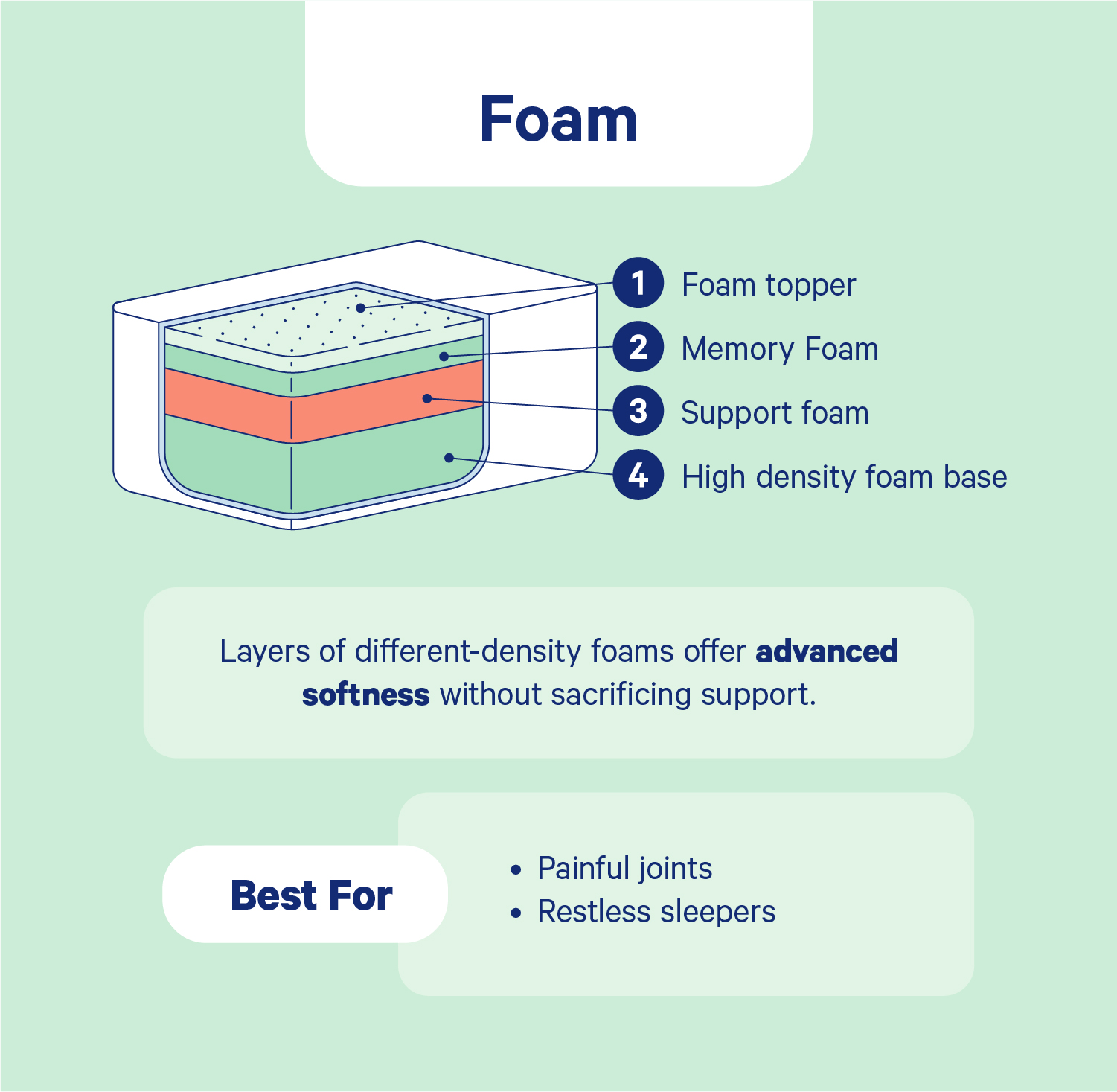
Upholstery Layers
Upholstery layers are the top layers of a mattress and provide the comfort level. They are usually made up of foam, fiber, or feather-filled fiber batting. The foam is designed to cradle the body and distribute pressure evenly. Fiber and feather-filled fiber batting provide a soft and conforming feel.
Support Layer
The support layer is the layer below the upholstery layers and is the foundation of the mattress. It’s usually made of high-density foam, innersprings, or a combination of both. The support layer provides the firmness and support needed to promote spinal alignment.
Comfort Layer
The comfort layer is the layer below the support layer and is designed to provide additional cushioning and pressure relief. It’s usually made of memory foam, latex foam, or a combination of both. Memory foam contours to the body and helps reduce pressure points. Latex foam provides a firmer feel and helps promote spinal alignment.
Benefits of Different Mattress Components
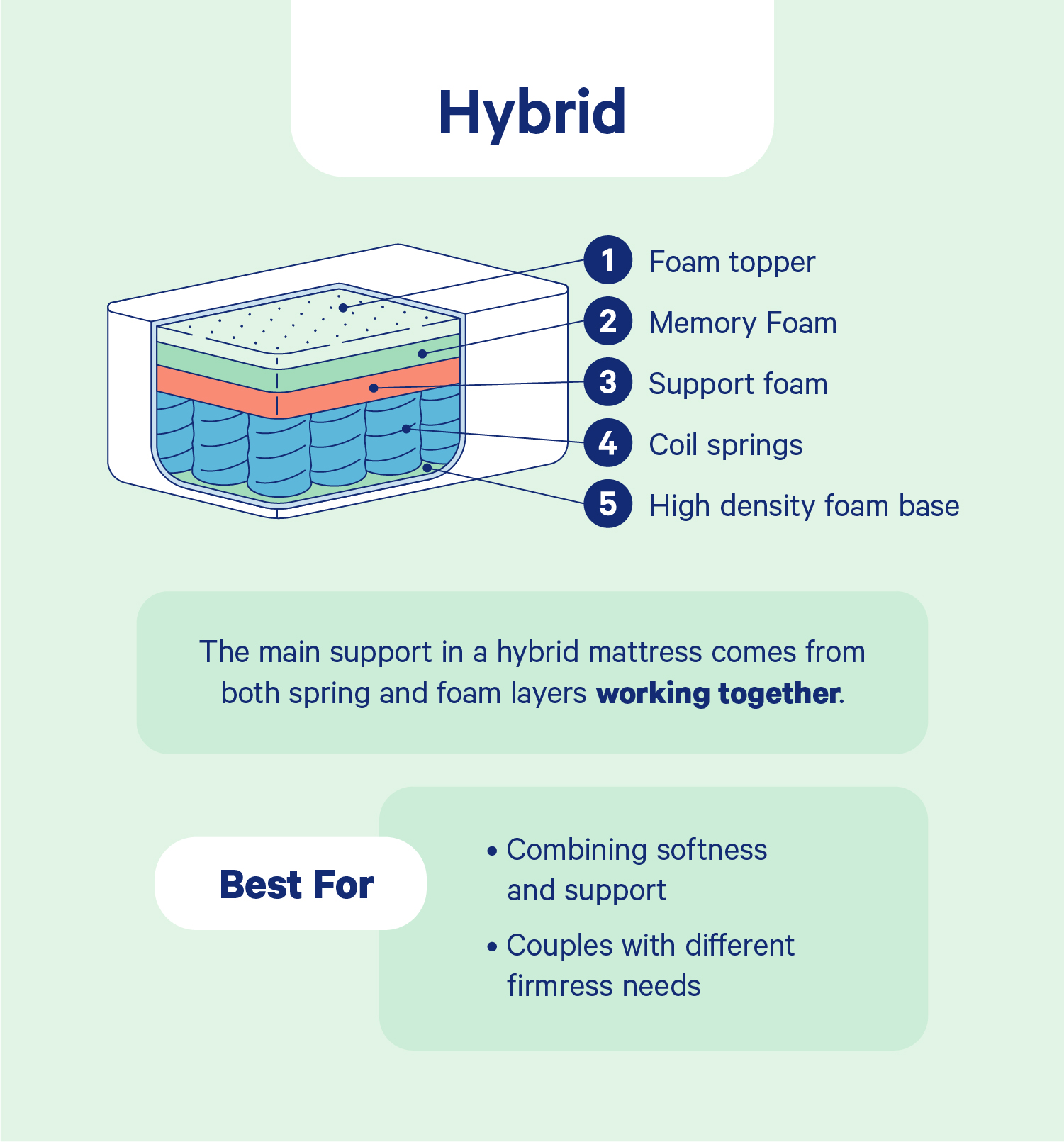
Upholstery Layers
Upholstery layers are the topmost layers of a mattress and are usually made of natural and synthetic materials. They provide increased comfort and support, while also adding insulation to keep the mattress warm. The materials used in these layers are usually breathable, helping to keep you cool during sleep.
Support Layer
The support layer is usually made of firm foam or springs and is designed to provide your body with the correct support. It helps to reduce pressure points and keep your spine correctly aligned, allowing for optimum comfort and support.
Comfort Layer
The comfort layer is usually made of soft foam or latex and provides cushioning and contouring to ensure you get a comfortable night’s sleep. This layer helps to reduce movement, making it suitable for couples who share a bed. It also helps to provide a cooling effect, keeping you from feeling too hot during the night.
Advantages of Different Types of Mattresses
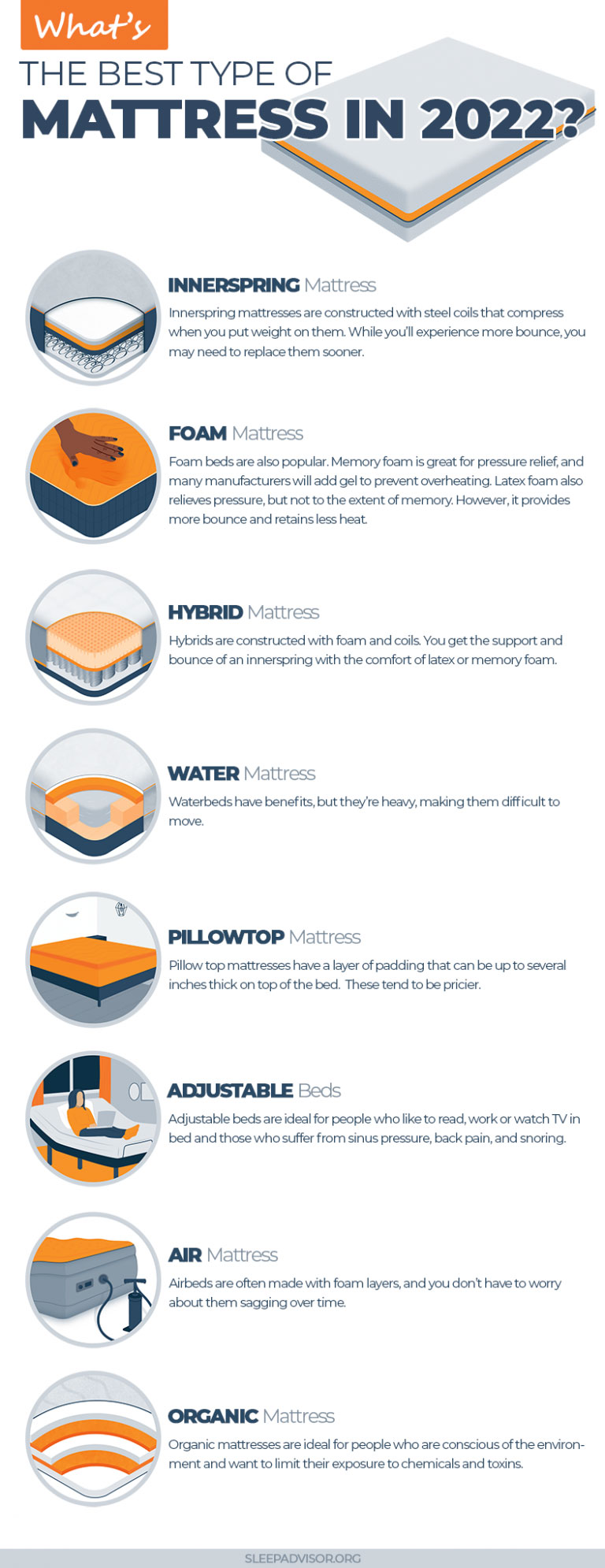
Innerspring Mattresses
Innerspring mattresses are a classic choice for many sleepers. These mattresses are made of steel coils and offer a bouncy, supportive feel. Additionally, innerspring mattresses are typically the most affordable mattress option, making them a great choice for budget-conscious shoppers.
Memory Foam Mattresses
Memory foam mattresses have become increasingly popular in recent years. These mattresses are made of a unique foam material that contours to the body to provide pressure point relief and support. Memory foam mattresses also tend to be quieter than innerspring mattresses, making them a great option for those who are easily disturbed by noise.
Latex Mattresses
Latex mattresses are made of a material derived from rubber trees. These mattresses provide a more natural, breathable feel than traditional foam mattresses. Additionally, latex mattresses tend to be more durable than other types of mattresses, making them a great choice for those who want a mattress that will last.
Hybrid Mattresses
Hybrid mattresses are a combination of innerspring and foam mattresses. These mattresses provide the best of both worlds with a supportive, bouncy feel and pressure point relief. Hybrids are also typically more durable than other mattress types, making them a great choice for those looking for a mattress that will last.
Disadvantages of Different Types of Mattresses
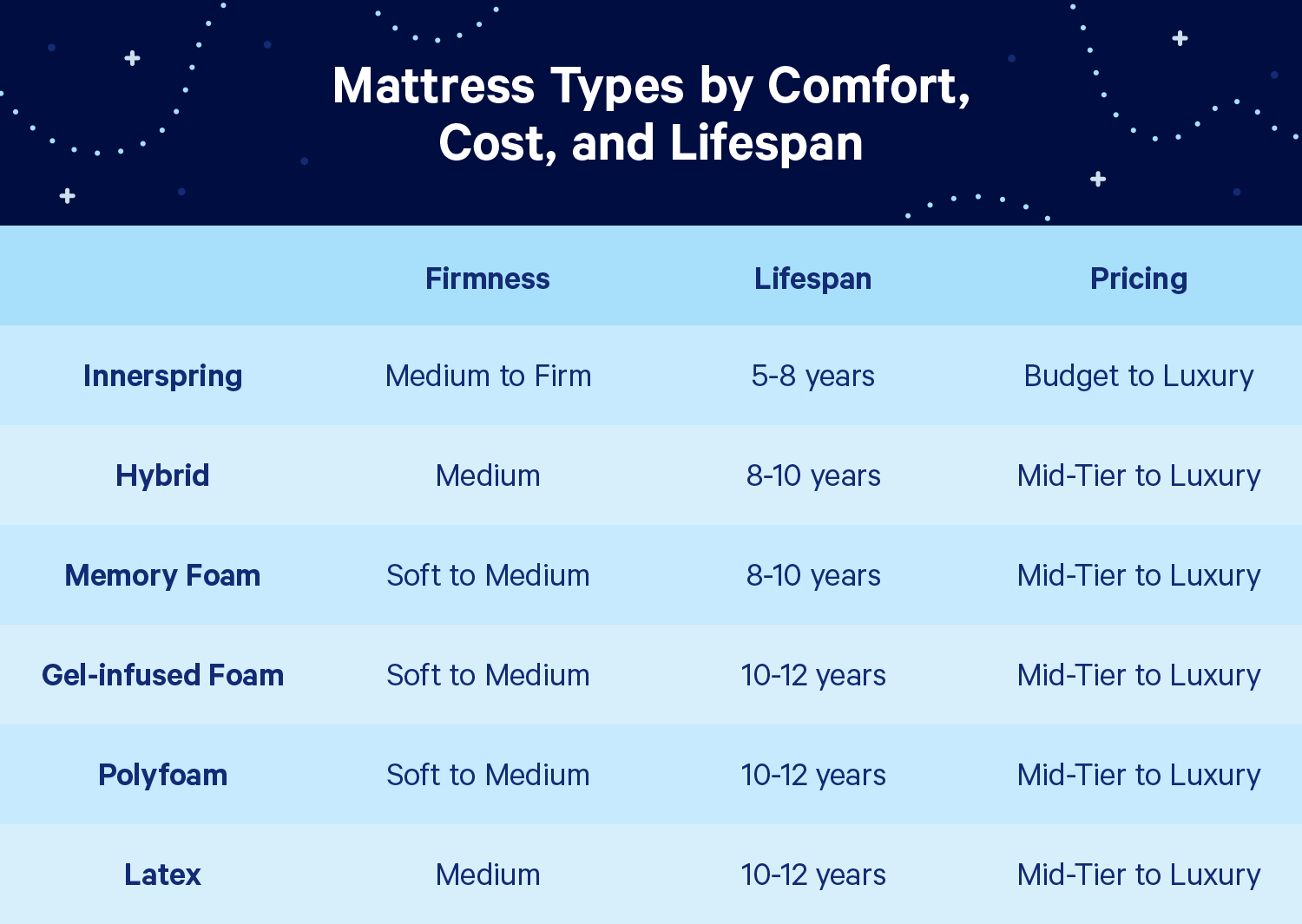
Innerspring Mattresses
Innerspring mattresses can be quite noisy due to the springs. They can also sag over time, leading to an uneven sleeping surface. In addition, they do not conform to the body as much as memory foam and latex mattresses, so they may not offer the same level of comfort.
Memory Foam Mattresses
Memory foam mattresses can also be noisy and can cause excessive heat retention. They are also prone to off-gassing, a chemical smell caused by the mattress materials. Additionally, memory foam mattresses can be quite expensive and may not be suitable for those with allergies.
Latex Mattresses
Latex mattresses can be quite durable, but they can be expensive. They are also quite heavy, making them difficult to move and adjust. Similar to memory foam, they can also cause off-gassing and may not be suitable for those with allergies.
Hybrid Mattresses
Hybrid mattresses are a combination of springs and foam and are usually quite expensive. They may also contain synthetic materials and off-gassing can be an issue. Hybrid mattresses are also quite heavy and difficult to move.
How to Choose the Right Mattress
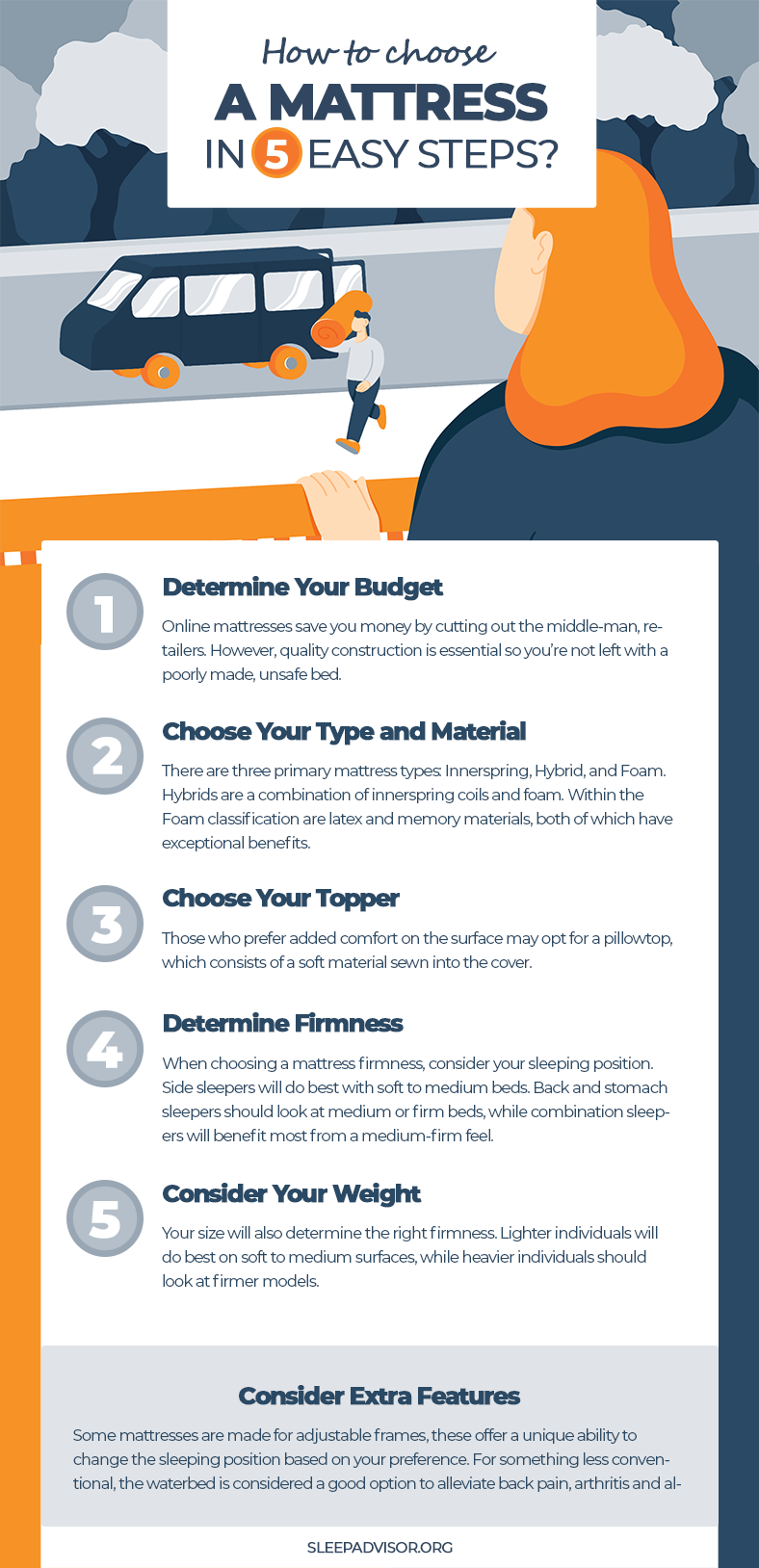
Choosing the right mattress is essential for getting a good night’s sleep. Some factors to consider include mattress size, mattress type, and the level of comfort.
Mattress Size – First, consider the size of the mattress. It should fit comfortably in the bed frame and be large enough to accommodate any body type.
Mattress Type – Different mattress types offer different levels of comfort and support. Memory foam, innerspring, and hybrid mattresses are all popular choices. Consider the level of support, cushioning, and temperature control that is needed.
Level of Comfort – Finally, consider the level of comfort that is desired. Everyone has a different preference when it comes to comfort, so it is important to try out a few different mattresses and decide which one is best.
Finding the right mattress is a personal decision and there is no one-size-fits-all solution. Taking the time to consider mattress size, type, and comfort will ensure that the perfect mattress is chosen for a good night’s sleep.
Factors to Consider When Buying a Mattress
Comfort Level
Comfort is the most important factor to consider when buying a mattress. You should look for a mattress that provides ample support to your body, one that contours to your body and keeps it in an ideal sleeping position.
Durability
When looking for a mattress, it is important to consider its durability. A good quality mattress should last for many years and should be able to withstand daily wear and tear. It should also be able to resist sagging and other signs of deterioration.
Size
When buying a mattress, it is important to consider the size of the mattress. A mattress should fit your bed frame and be appropriate for the size of the room. It should also provide enough space for you and your partner to sleep comfortably.
Price
The price of a mattress is another factor to consider when buying one. Look for a mattress that is within your budget, but also one that offers the features and benefits you need.
Frequently Asked Questions
How Often Should a Mattress Be Replaced?
Generally, it is advisable to replace your mattress every 7-10 years. However, this timeline may vary depending on how you use and care for your mattress. Here are some signs that you may need to replace your mattress sooner than later:
- It is lumpy, sagging, or no longer supportive of your body.
- You experience back pain or other body aches while sleeping on it.
- You wake up feeling more tired than when you went to bed.
- It is visibly worn or damaged.
- It is over 7-10 years old.
If you experience any of these signs, it may be time to invest in a new mattress. Make sure to do your research and find one that will provide the level of support and comfort your body needs for a good night’s sleep.
What Type of Mattress is Best for My Body Type?
The type of mattress best suited to your body type depends on your personal sleep habits, body weight and shape, and preferred sleeping position. Generally, sleepers who are light to average weight (under 130 lbs) prefer a softer mattress that conforms to the body. Those who are average to heavy (over 130 lbs) may benefit from a firmer mattress with more support. Back sleepers typically need a mattress that is softer in the middle and firmer around the edges for adequate lumbar support. Side sleepers usually require a softer mattress for pressure relief and support, while stomach sleepers may prefer a firmer mattress that keeps their hips from sinking too far into the bed.
Are there any health benefits associated with sleeping on a mattress?
Yes, there are several beneficial health effects associated with sleeping on a mattress:
- Improved sleep quality: A good mattress helps to promote a comfortable and supportive sleeping environment, which can help to reduce tossing and turning at night, allowing for a deeper and more restful sleep.
- Reduced back pain: Sleeping on a mattress that provides adequate back support can help to reduce or eliminate back pain. A mattress with a medium-firm feel will provide the best support and help to keep the spine in alignment.
- Reduced risk of injury: A mattress that conforms to the body’s natural curves can help to reduce the risk of injury from excess pressure on certain areas. This can help to improve overall comfort and reduce the risk of developing issues related to improper body positioning.
- Improved circulation: A mattress that conforms to the body’s natural curves can help to improve circulation, which can help to reduce aches and pains.
- Reduced stress levels: A mattress that provides comfort and support can help to reduce stress levels, which can have a positive impact on overall health and wellbeing.
What Safety Considerations Should I Be Aware Of When Buying a Mattress?
When choosing a mattress, it’s important to ensure that it meets regulated safety standards. Look for a mattress that is certified by organizations like GREENGUARD and CertiPUR-US to ensure that it has been tested for pollutants, flame retardants, and other safety issues. Make sure the mattress is made with materials that are hypoallergenic and dust mite resistant. Also, check the label to make sure the mattress meets the size requirements of your bed frame.
Are there any mattress materials that are better for the environment?
Organic Cotton – Organic cotton is grown without any synthetic fertilizers or pesticides, making it better for the environment and your health. It’s also very breathable and soft, making it a great choice for a mattress material.
Wool – Wool is naturally fire-resistant and breathable, so it helps keep your mattress cool and comfortable. It’s also biodegradable, making it a great eco-friendly option.
Bamboo – Bamboo is a sustainable material that is naturally resistant to dust mites and allergens. It’s also biodegradable, making it a great choice for someone looking for an environmentally friendly mattress.
Latex – Latex is a natural rubber material that is hypoallergenic and breathable. It’s also biodegradable and biocompostable, making it an excellent option for an eco-friendly mattress.
Recycled Materials – Many mattress companies are now using recycled materials, such as plastic bottles and fabric scraps, to make their mattresses. This helps reduce waste and conserve resources, making them a great option for an eco-friendly mattress.
Conclusion
A mattress is a complex piece of furniture that requires a lot of research and consideration before purchasing. Different types of mattresses have different levels of support, comfort and durability, so it’s important to find the type that best suits your personal needs. Knowing what is inside a mattress and understanding the different components will help you make an informed decision when selecting the mattress that is best for you. With the right mattress, you are sure to have a comfortable and restful night’s sleep.


